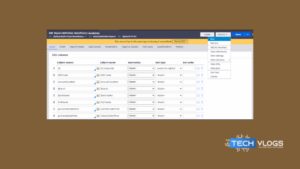Pega Clipboard & Pages: Data Exchange Explained
Clipboard
The Clipboard in pega is an important tool used for examining and debugging the contents of memory during the runtime of a Pega application. It acts as a snapshot of the current state of the application’s data and is essential for understanding the data being processed at any given time.

Key Aspects of the Clipboard in Pega
1.Clipboard Pages:
User Pages: Contains data specific to the user session, including work objects and user-specific data.
Data Pages: Stores data retrieved from external sources or other parts of the application. These can be read-only or read-write, depending on their configuration.
System Pages: Holds system-related information such as operator details, requestor details, and other context-specific information.
Declarative Pages: Used for storing data that is automatically updated by declarative rules like data transforms and expressions.
2.Clipboard Viewer:
Navigation: Provides a tree structure for navigating through different pages and their properties.
Search: Allows searching for specific data elements within the Clipboard.
Details Panel: Displays detailed information about the selected page, including properties and their values.
3.Properties and Values:
Scalar Properties: Simple data types like strings, integers, dates, etc.
Aggregate Properties: Collections such as lists or groups, which can contain multiple values or nested data structures.
4.Operations and Actions:
Editing Values: Developers can manually edit property values to test different scenarios.
Refreshing Pages: Refreshes the data on a page to reflect the latest state.
Deleting Pages: Allows the removal of specific pages from the Clipboard to clear memory or reset state.
How to store data temporarily in clipboard ?
This is one of the main debugging tools that temporarily stores WO data and other information.
In other Words, “Clipboard is an interface between PRPC and its rule base, which is going to temporarily store Data”.
Once we submit, this data gets stored into rule base Work Table.
Before it goes to work table, this data gets posted to temporary storage location called “Clipboard”.
In the designer studio, bottom we can see clipboard link
Click on link
Close this.
Submit the customer FORM.
Now, go to clipboard again
Now data is available on clipboard.
When we submit UI, Data will get posted to clipboard -> From clipboard it will taken to rule base table.
DONE.
The WO data, that is posted on to clip board is posted to, system created page “pyWorkPage”.
To find WO data on clipboard , we have to access pyWorkPage.
Page
In Pega, the “About Page” typically refers to a section within the Pega application that provides metadata and detailed information about a particular page. This information helps developers and users understand the page’s purpose, structure, and functionality within the application.
What is a Page ?
A page is an aggregate or embedded property that refers to a class and holds the properties of its referenced class. This enables the consolidation of related data within a single entity.
Page: Page holds Properties and values.
When we look at the clipboard, we see that each page refers to a class.
“pyWorkPage” is referring to class “PRIM -Vehicle -Work
Page is going to act as a reference to class.
Page holds the properties of its reference class as well as its parent classes.
Example
What are the advantages of pages ?
Using Pages, we can reuse properties (rules) for different purposes.
Generally pages to access the properties of NON inherited classes.
EXAMPLE :
A-B-C X-Y-Z
- First Name Age
- Last Name Gender
Between A-B -C and X-Y-Z, We don’t have any inheritance relation . In order to access the properties of A-B-C class into X-Y-Z, we need to create a page.
X-Y-Z
- Age
- Gender
- Page1 (A-B-C)
i) FirstName
ii)Last Name
Now, we can access first name and last name from X-Y-Z class like
Page1.FirstName
page1.LastName.
How to Create a page in PRIM -Vehicle class, which refers to FW Class.
Click on the link change .
Click on single Page
Select
Select a class under page definition
Save.
Refresh left tree.
Conclusion
Clipboard in page: By leveraging the information provided on the About Page, Pega developers and users can ensure that pages are well-structured, optimized, and aligned with the overall application requirements.


1 thought on “Pega Clipboard & Pages | Data Exchange Explained”